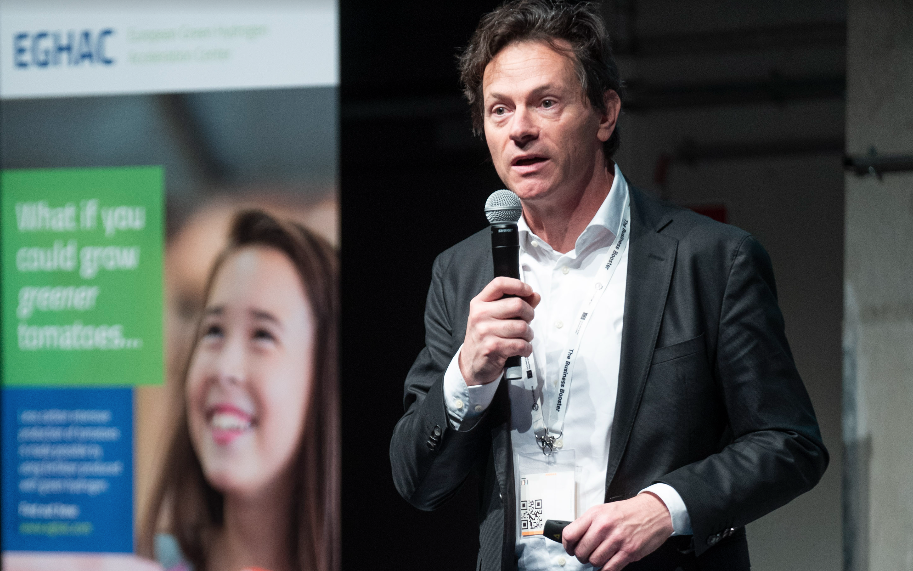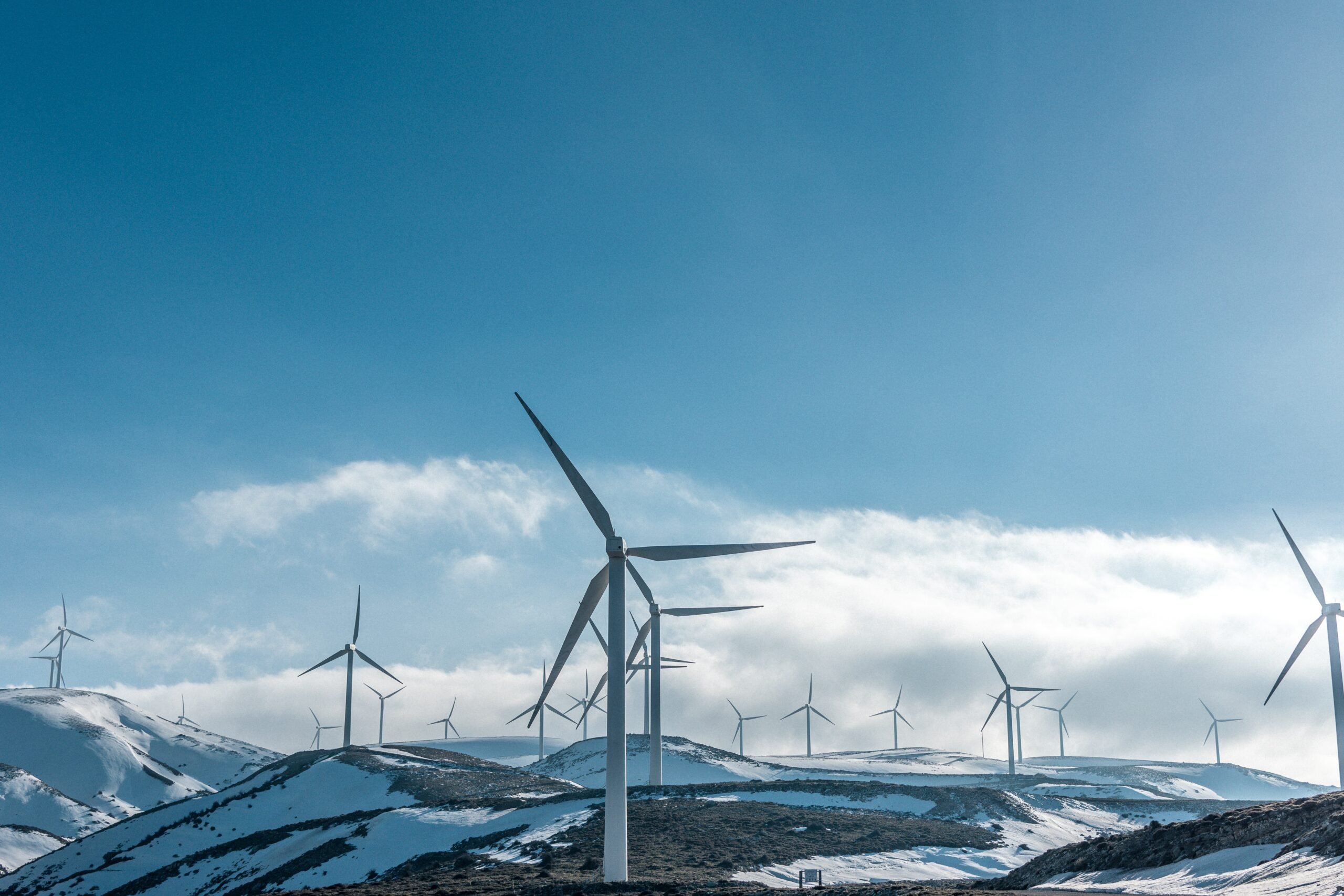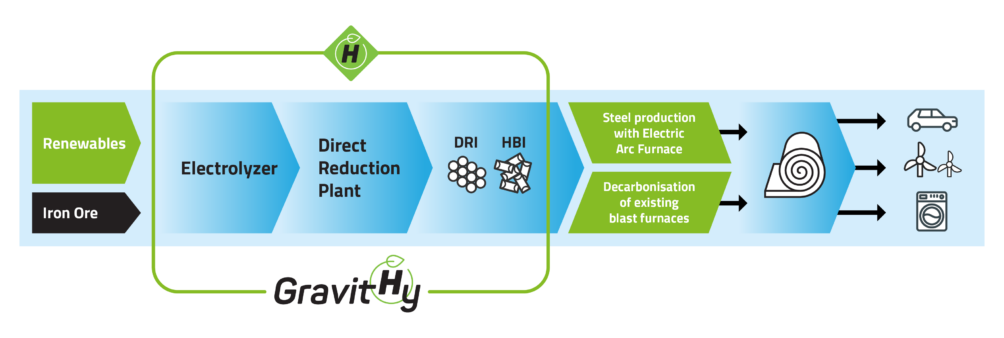
Steel, fertilizers, chemicals, heavy transport, aviation: these industries – and many more – are part of value chains that have difficulty becoming sustainable. Demand for the products is always high, and customers are willing to pay a reasonable price, but the production processes are causing an unacceptable level of carbon emissions. The stakeholders know they will have to decarbonize, but all of them are having a hard time finding a way to achieve that without losing their business opportunities.
To break this cycle, EIT InnoEnergy has taken the initiative for the European Green Hydrogen Acceleration Center (EGHAC), and in this initiative, it is supported by Breakthrough Energy. “With this activity, we aim to decarbonize complete industrial value chains, especially those that have not yet found the commercially viable business opportunities to do so”, says Jacob Ruiter, CEO of EIT InnoEnergy Benelux and Managing Director of EGHAC. Using green hydrogen, ammonia, methanol, and other green fuels, EGHAC aims to help these companies accelerate their decarbonization processes while reducing risks and retaining a viable business. “Our first target is the steel industry”, he says. This sector is responsible for 8% of the global energy demand and 7% of the energy sector’s CO2 emissions – making it one of the most significant carbon-emitting industries

Complete value chain approach
Essential in this effort is the ecosystem EIT InnoEnergy has been building for the past decade, Ruiter adds. “It allows us to create new industrial organizations through early-stage investment and acceleration services delivered in collaboration with our network. Altogether, it’s a complete value chain approach. By bringing all stakeholders together, including the off-takers, the risks and benefits can be shared so the extra costs for a carbon-free end product are kept to a minimum.”
Ruiter and his team have experienced that this thinking is best applied when a new company is set up with value chain partners to share the risks and revenues. “If you do this in a traditional project approach, the benefits and burdens are often not equally divided between the stakeholders. And to be clear: the EGHAC initiatives never require subsidies to close the business case. Of course, subsidies are still welcome, but we do not depend on them. This aspect sets us apart from the hundreds of hydrogen project announcements that are waiting for grants and often get stuck in the project phase.”
Proof of viability

After already being involved in the initial set-up of H2 Green Steel, EGHAC has recently founded GravitHy. With this sustainable iron and steel company in southern France, EIT InnoEnergy and its partners want to offer proof of the model’s viability. Founding shareholders are, next to EIT InnoEnergy, Engie New Ventures, FORVIA, GROUPE IDEC, Plug, and Primetals Technologies. The project aims to mobilize €2.2 billion in investments. The plant in Fos Sur Mer should be fully operational by 2027 and aims to produce two million tons of Direct Reduced Iron (DRI) annually and create over 3,000 direct and indirect jobs for the region.
“GravitHy will support the emissions reduction of this industry by generating and using green and low-carbon hydrogen to produce iron”, Ruiter says.
Holistic approach
Although many industries see the potential of green hydrogen to store and use energy, there’s a significant dispute about its efficient production, mainly caused by the apparent energy loss in the production and storage process and, partly because of this, the high costs. GravitHy wants to change this. Ruiter: “Our holistic approach can break through these – understandable – objections. By seeing the interdependencies all the way, from securing enough renewables, producing the green hydrogen, integrating this hydrogen in chemical or other processes, to finally producing the product and finding the off-takers, we can unite stakeholders instead of dividing them. EIT InnoEnergy’s position as a neutral companion supports this: we can facilitate the whole process by bringing all these elements and players on board.”
EGHAC and GravitHy see a growing demand for green steel from off-takers looking for ways to reduce their carbon footprint. This trend is reinforced by political and regulatory pressure and the geopolitical situation. “Still, green hydrogen is a means and never a goal in itself”, Ruiter adds. “It is a means to decarbonize those industries where direct electrification is impossible, and hydrogen offers the best alternative to become more sustainable.”
Battery alliance and solar initiative
For EIT InnoEnergy, the green hydrogen project is not the only way to support sustainable energy projects. It also started the European Battery Alliance (EBA), where projects have been launched that cover the whole spectrum from raw materials to battery recycling, thus strengthening Europe’s competitive position. In another effort, the European Solar Initiative is looking at bringing solar panel production back to Europe. Ruiter concludes: “These projects are, just like EGHAC, all about creating sustainable industrial value chains. As the world’s largest investor in sustainable energy innovations, this is what Europe can expect from us – and build a greener future upon.”

